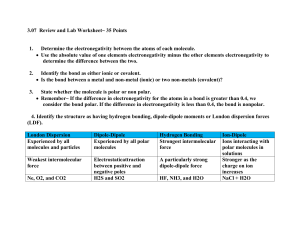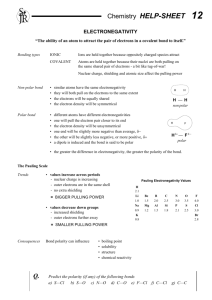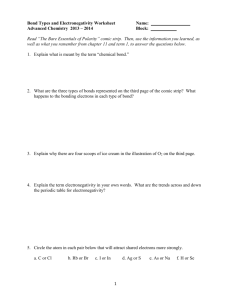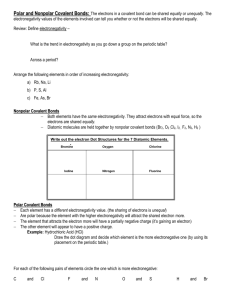Electronegativity and Polar Bonds
advertisement
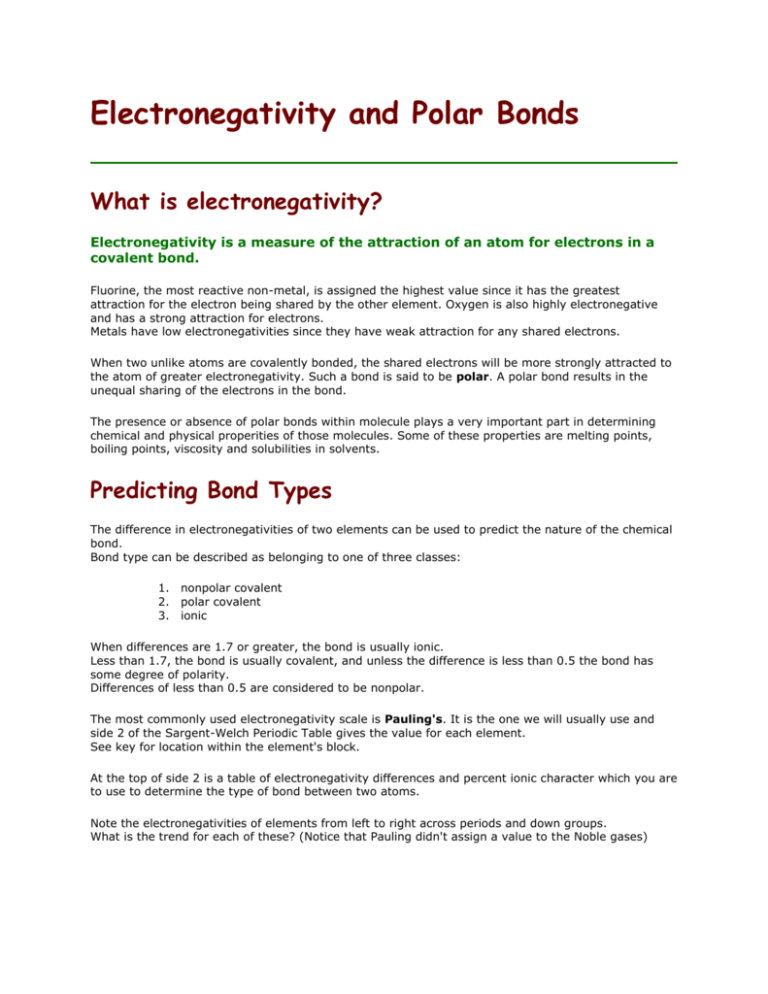
Electronegativity and Polar Bonds What is electronegativity? Electronegativity is a measure of the attraction of an atom for electrons in a covalent bond. Fluorine, the most reactive non-metal, is assigned the highest value since it has the greatest attraction for the electron being shared by the other element. Oxygen is also highly electronegative and has a strong attraction for electrons. Metals have low electronegativities since they have weak attraction for any shared electrons. When two unlike atoms are covalently bonded, the shared electrons will be more strongly attracted to the atom of greater electronegativity. Such a bond is said to be polar. A polar bond results in the unequal sharing of the electrons in the bond. The presence or absence of polar bonds within molecule plays a very important part in determining chemical and physical properities of those molecules. Some of these properties are melting points, boiling points, viscosity and solubilities in solvents. Predicting Bond Types The difference in electronegativities of two elements can be used to predict the nature of the chemical bond. Bond type can be described as belonging to one of three classes: 1. nonpolar covalent 2. polar covalent 3. ionic When differences are 1.7 or greater, the bond is usually ionic. Less than 1.7, the bond is usually covalent, and unless the difference is less than 0.5 the bond has some degree of polarity. Differences of less than 0.5 are considered to be nonpolar. The most commonly used electronegativity scale is Pauling's. It is the one we will usually use and side 2 of the Sargent-Welch Periodic Table gives the value for each element. See key for location within the element's block. At the top of side 2 is a table of electronegativity differences and percent ionic character which you are to use to determine the type of bond between two atoms. Note the electronegativities of elements from left to right across periods and down groups. What is the trend for each of these? (Notice that Pauling didn't assign a value to the Noble gases)


